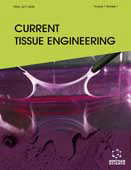Abstract
Failure of integration between a medical implant and the host tissue may result in implant failure. A potent reason for failure of integration is infection. The risk is greater with percutaneous implants where the skin is disrupted. This limits the time that the implants can be used. Implant failure from infection can increase patient’s morbidity, and therefore cause a significant increase in healthcare costs.
However, significant opportunities to address this problem may arise if the fields of medical implants, tissue engineering and regenerative medicine converge into a new area of research applying translational solutions drawn from engineering and regenerative medicine.
Current implants generally do not allow the physician to have controlled long-term access to internal tissues in contact with the implants or to release specific compounds when medically needed to the problem area. But recent work in which modified implants are becoming smart, intelligent and responsive by converting them from bioinert into bioactive implants with dynamic interfaces can dramatically change this situation. Conversion of a surgical implant into a dual purpose device allowing the controlled, timed, on-demand, repetitive local delivery of varied cells (i.e. autologous, somatic or even stem cells), regenerative materials, drugs and anti-microbials from the implant itself to the surrounding tissues can help in reducing implant failure. This conversion can pave the way to the implementation of translational solutions to improve the integration tissue-implant. While this concept is valid for all surgical implants, it will be most useful for devices that are implanted for long periods of time or with higher risk of failure and may prove particularly useful in reducing device infections.
Keywords: Medical device, implant interface, regenerative medicine, tissue engineering, drug delivery, somatic, biointegration, hybrid, encapsulation, microfluidics.
 15
15

